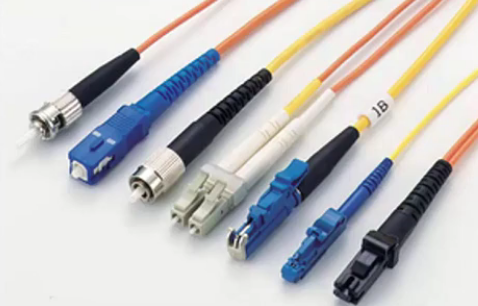< Section 9 | Home | Section 11 >
27% Completed
55: Introduction
https://www.udemy.com/cisco-icnd1/learn/lecture/8601366#content
56: Ethernet Connection Media
https://www.udemy.com/cisco-icnd1/learn/lecture/8601368#content
- OSI Layer 1 conveys the bit stream – electrical impulse, light or radio signals – through the network at the electrical and mechanical level
- it provides the hardware means of sending and receiving data, including defining cables, interfaces cards and physical aspects.
Layer 1 Connection Types for Ethernet – UTP
- Ethernet LAN connections can be carried over cozial cable (obsolete), twisted copper pair cable, fiber cable or wireless
- Copper UTP (Unshielded Twisted Pair) cables are commonly used to connect desktop computers to switches.
- Connector type is RJ-45 and the maximum length is 100 Metres.
- https://en.wikipedia.org/wiki/Twisted_pair#Common_types
- Old standard was Cat 5, now up to Cat 7 and 8
- Cat 5: 1Gbps
- Cat 6: 10Gbps
Cable Types – Straight Through vs Crossover UTP Cable
- The receive and transmit wires in a UTP cable can be wired to the RJ-45 connector as either either straight through or crossover.
- Straigt-through cables are used to connect an end device, such as a PC or Router to a switch
- Crossover cables are used to connect devices together directly. They are most often used to connect two devices of the same type, such as two computers or two switches to each other.
- Modern switches support Auto MDI-X where the receive and transmit signals are reconfigured automatically to yieled the expected result.
- This means you can use a straight through cable and it should still work.
Fiber Cables
- Fiber optic cables can be used to support longer distances, or higher bandwidth requirements.
- Between separate buildings in a campus, or for switch to switch connections inside a building (to support the higher bandwidth requirements).
Single Mode vs Multi Mode Fiber
- Single mode supports hither bandwidth and longer distances, but is more expensive
- Single Mode: < 10Gbps over 1000 miles (?)
- Multi-Mode: < 10Gbps over 2000′
- https://en.wikipedia.org/wiki/Multi-mode_optical_fiber
Connectors
- Fiber optics generally do not connect directly into a switch.
- They require a transceiver that converts the light into electrical pulses the switch can understand.
